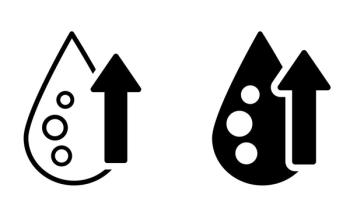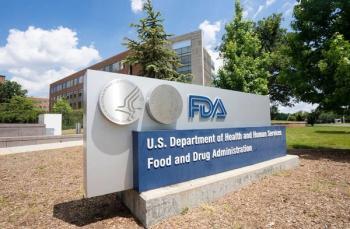
What’s New in Perioperative Medicine?
Primary care physicians are called upon to assess risk in patients undergoing a variety of surgical procedures. In some ways, perioperative medicine is quickly evolving into a “subspecialty” of its own. Recently, Jaffer and associates1 updated the area with new data accumulated over the past 2 years.
Primary care physicians are called upon to assess risk in patients undergoing a variety of surgical procedures. In some ways, perioperative medicine is quickly evolving into a “subspecialty” of its own. Recently, Jaffer and associates1 updated the area with new data accumulated over the past 2 years.
ACC/AHA GUIDELINES FOR CARDIAC RISK ASSESSMENT FOR NONCARDIAC SURGERY
Updated risk assessment. Three areas of the previous (2002) guidelines from the American College of Cardiology/American Heart Association (ACC/AHA) were updated in the most recent guidelines2:
•Clinical risk predictors (history of heart disease, prior or compensated heart failure, cerebrovascular disease, diabetes, or renal insufficiency).
•Surgery-specific risks (low, intermediate, or high risk, such as vascular surgery).
•Self-reported exercise capacity (4 metabolic equivalents [METS] or higher is considered good).
A new algorithm, which included the revised cardiac risk factors, was developed. It was designed to minimize the use of noninvasive testing (stress tests) before surgery. According to this algorithm, noninvasive testing should be ordered only when the results “will change management.”2
Preoperative cardiac revascularization. A study demonstrated that this contingent of positive noninvasive testing for coronary disease does not benefit even “high-risk” patients who undergo vascular surgery.3 Less invasive preoperative testing and fewer preoperative invasive interventions (percutaneous transluminal coronary angioplasty or bypass), coupled with appropriate perioperative use of β-blockers, are recommended. Even patients with abnormal dobutamine stress echocardiograms can have good outcomes after surgery without interventional techniques. Revascularization is recommended only for those patients with 5 or more abnormal segments on dobutamine stress testing.3
Perioperative -blockade. Questions remain about perioperative use of β-blockers, especially in patients who were not taking them before surgery. In fact, the Perioperative Ischemic Evaluation (POISE) Study Group (a cohort of patients 45 years or older with atherosclerotic heart disease or risk factors who were undergoing noncardiac surgery) demonstrated that metoprolol (extended release, 200 mg) reduced myocardial infarctions, but at the expense of strokes and overall mortality.4
Jaffer and associates1 commented that it remains unclear which groups of β-blocker–naive patients would benefit from perioperative β-blockade. The large dose of β-blocker used in the POISE study can often cause hypotension in such patients. However, if patients take β-blockers routinely, these agents should be continued during the perioperative period.
Recently, the ACC/AHA updated their guidelines for the perioperative use of β-blockers in light of the POISE results.5
STATINS TO THE RESCUE ONCE AGAIN
In 359 patients undergoing vascular surgery (aortic aneurysm, peripheral vessel bypass, or carotid surgery), those who received higher-dose statin therapy had lower rates of myocardial ischemia and troponin T elevations.6 The bottom line: statin use is reasonable for patients undergoing vascular surgery.1 The study showed that the lower the low-density lipoprotein cholesterol level, the lower the risk of ischemia.
PREDICTING PERIOPERATIVE RISKS FROM RESPIRATORY, RENAL,OR HEPATIC COMPLICATIONS
Risk scores were published to predict (and hopefully prevent) respiratory, renal, and liver complications during the perioperative period. The respiratory predictor identified 28 variables associated with respiratory failure.7 That is a large number to contend with. Hopefully, with further study, the tool can be abbreviated for day-to-day clinical efficiency.
The renal risk score includes age older than 58, liver disease, body mass index greater than 32, peripheral vascular disease, chronic obstructive pulmonary disease, and emergent and high-risk surgeries (vascular).8 This index is clinically useful. The absence of these risk factors predicts a 0.3% chance of acute renal failure in a population without renal disease; 1 risk factor, a 0.5% chance; 2 risk factors, 1.3%; 3 risk factors, 4.3%.
In regard to liver disease, newer data support the Model for End-Stage Liver Disease (MELD) score as a predictor, replacing the Child-Pugh score.9 The study demonstrated that age older than 70, increasing MELD score, and American Society of Anesthesia class correlate with mortality for patients with liver disease in the perioperative period. A single point increase in the MELD score between 30 to 90 days postoperatively is associated with an increase in mortality of 14%.
OUR EXPANDING ROLE AS RISK ASSESSORS
Primary care physicians no longer “clear” patients for surgery. We assess risk and discuss our findings with surgeons and patients, who then decide whether the risks are acceptable weighed against the benefits of the proposed surgery.
References:
REFERENCES:
1.
Jaffer AK, Smetana GW, Cohn S, Slawski B. Perioperative medicine update. J Gen Intern Med. 2009;24:863-871.
2.
Fleisher LA, Beckman JA, Brown KA, et al. ACC/AHA 2007 Guidelines on Perioperative Cardiovascular Evaluation and Care for Noncardiac Surgery: executive summary: a report of the American College of Cardiology/American Heart Association Task Force on Practice Guidelines (writing committee to revise the 2002 Guidelines on Perioperative Cardiovascular Evaluation for Noncardiac Surgery) developed in collaboration with the American Society of Echocardiography, American Society of Nuclear Cardiology, Heart Rhythm Society, Society of Cardiovascular Anesthesiologists, Society for Cardiovascular Angiography and Interventions, Society for Vascular Medicine and Biology, and Society for Vascular Surgery. J Am Coll Cardiol. 2007;50:1707-1732.
3.
Poldermans D, Schouten O, Vidakovic R, et al. A clinical randomized trial to evaluate the safety of a noninvasive approach in high-risk patients undergoing major vascular surgery: the DECREASE-V Pilot Study. J Am Coll Cardiol. 2007; 49:1763-1769.
4.
POISE Study Group, Devereaux PJ, Yang H, et al. Effects of extended-release metoprolol succinate in patients undergoing non-cardiac surgery: a randomised controlled trial. Lancet. 2008;371:1839-1847.
5.
Fleischmann KE, Beckman JA, Buller CE, et al. 2009 ACCF/AHA focused update on perioperative beta blockade incorporated into the ACC/AHA 2007 guidelines on perioperative cardiovascular evaluation and care for noncardiac surgery. J Am Coll Cardiol. November 2, 2009. doi:10.1016/j.jacc.2009.07.004:54. http://content.onlinejacc.org/cgi/reprint/j.jacc.2009.07.004v1.pdf. Accessed November 11, 2009.
6
. Feringa HH, Schouten O, Karagiannis SE, et al. Intensity of statin therapy in relation to myocardial ischemia, troponin T release, and clinical cardiac outcome in patients undergoing major vascular surgery. J Am Coll Cardiol. 2007;50: 1649-1656.
7.
Johnson RG, Arozullah AM, Neumayer L, et al. Multivariable predictors of postoperative respiratory failure after general and vascular surgery: results from the patient safety in surgery study. J Am Coll Surg. 2007;204:1188-1198.
8.
Kheterpal S, Tremper KK, Englesbe MJ, et al. Predictors of postoperative acute renal failure after noncardiac surgery in patients with previously normal renal function [published correction appears in Anesthesiology. 2008;108:969]. Anesthesiology. 2007;107:892-902.
9.
Teh SH, Nagorney DM, Stevens SR, et al. Risk factors for mortality after surgery in patients with cirrhosis. Gastroenterology. 2007;132:1261-1269.
Newsletter
Enhance your clinical practice with the Patient Care newsletter, offering the latest evidence-based guidelines, diagnostic insights, and treatment strategies for primary care physicians.

































































































































































































































































































